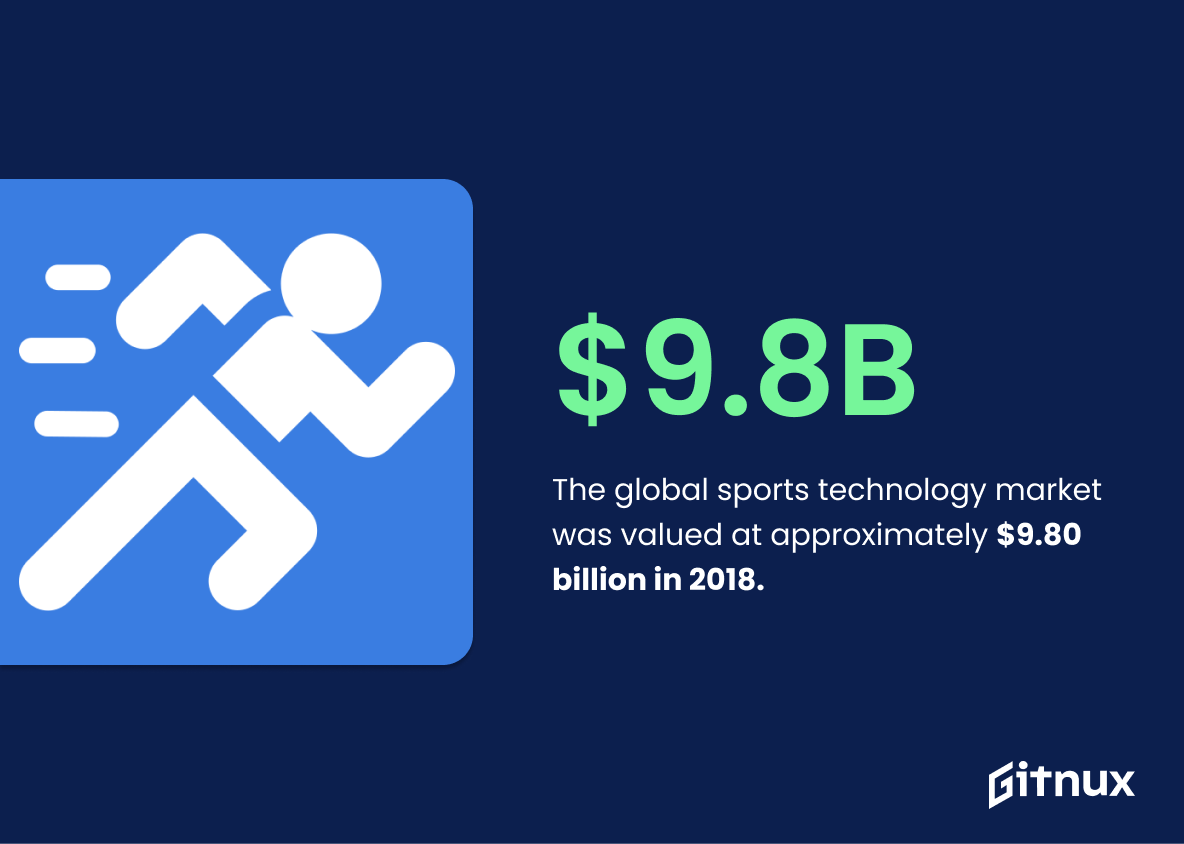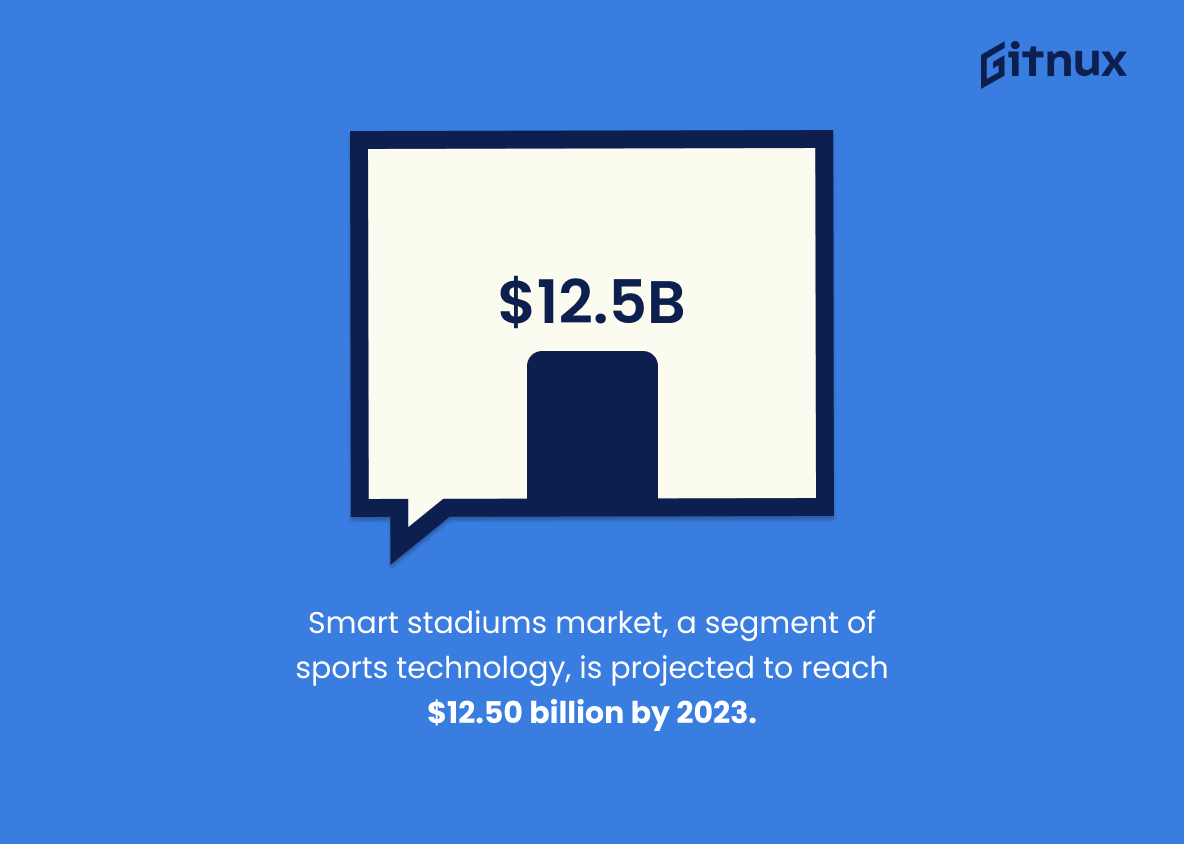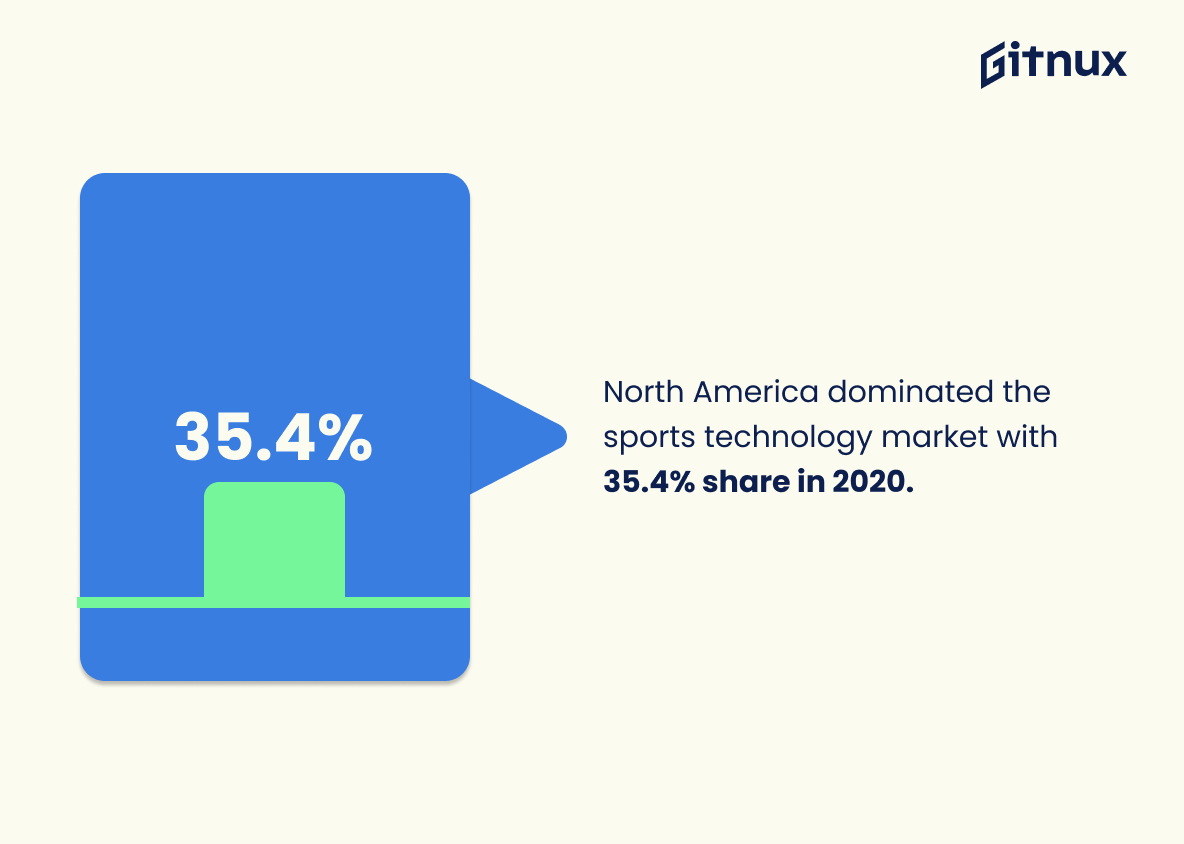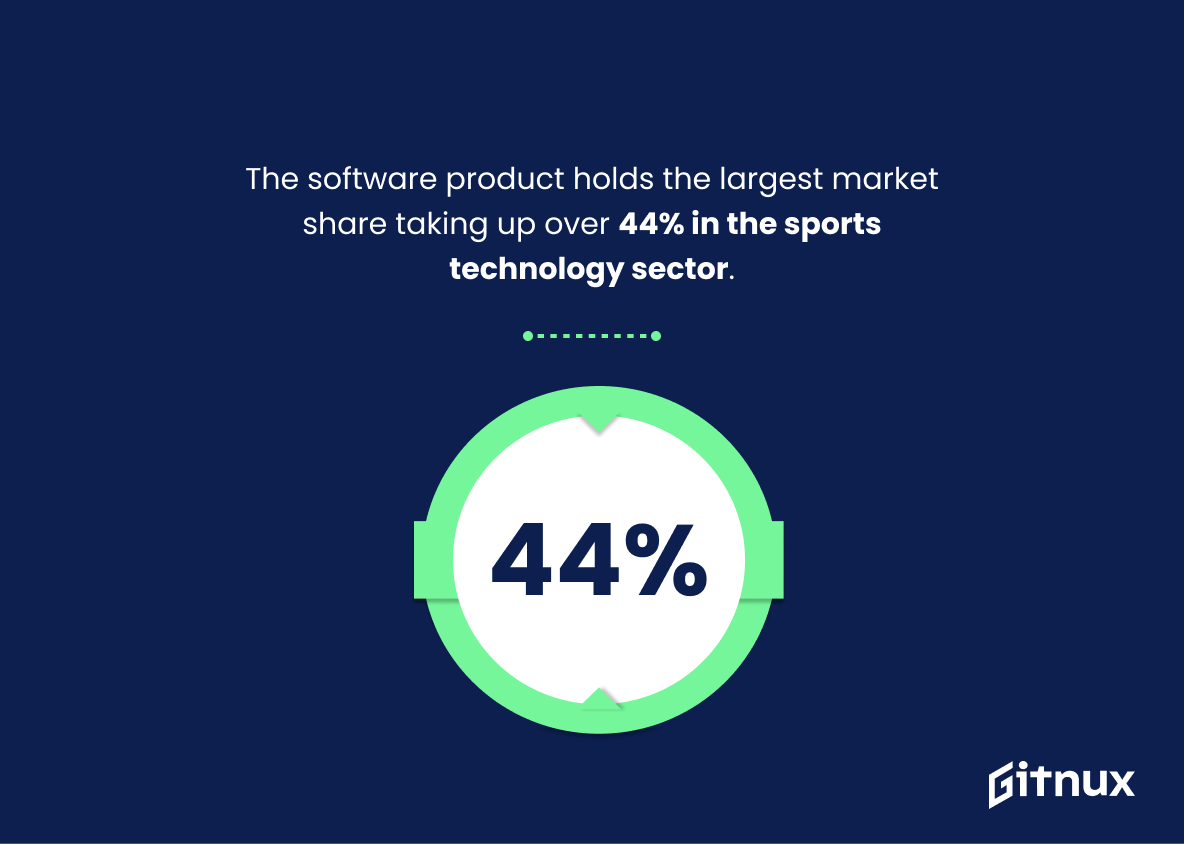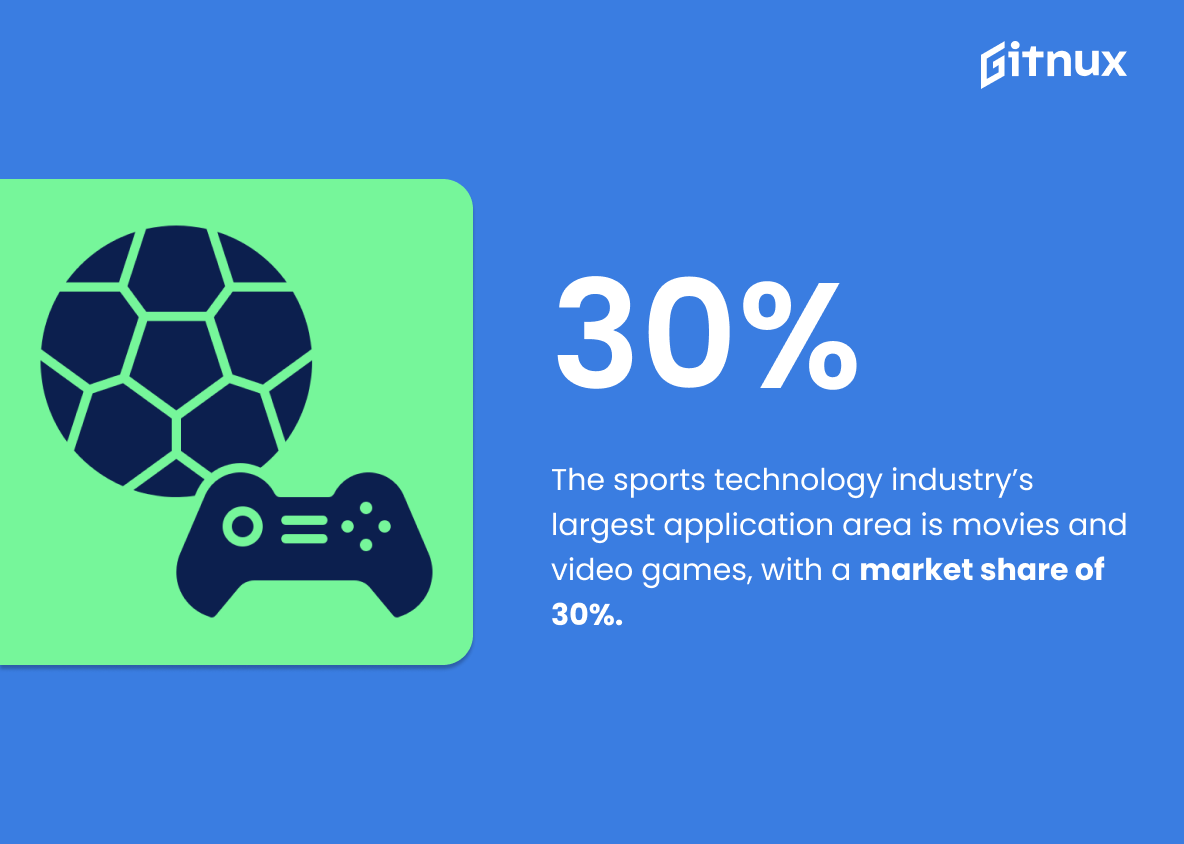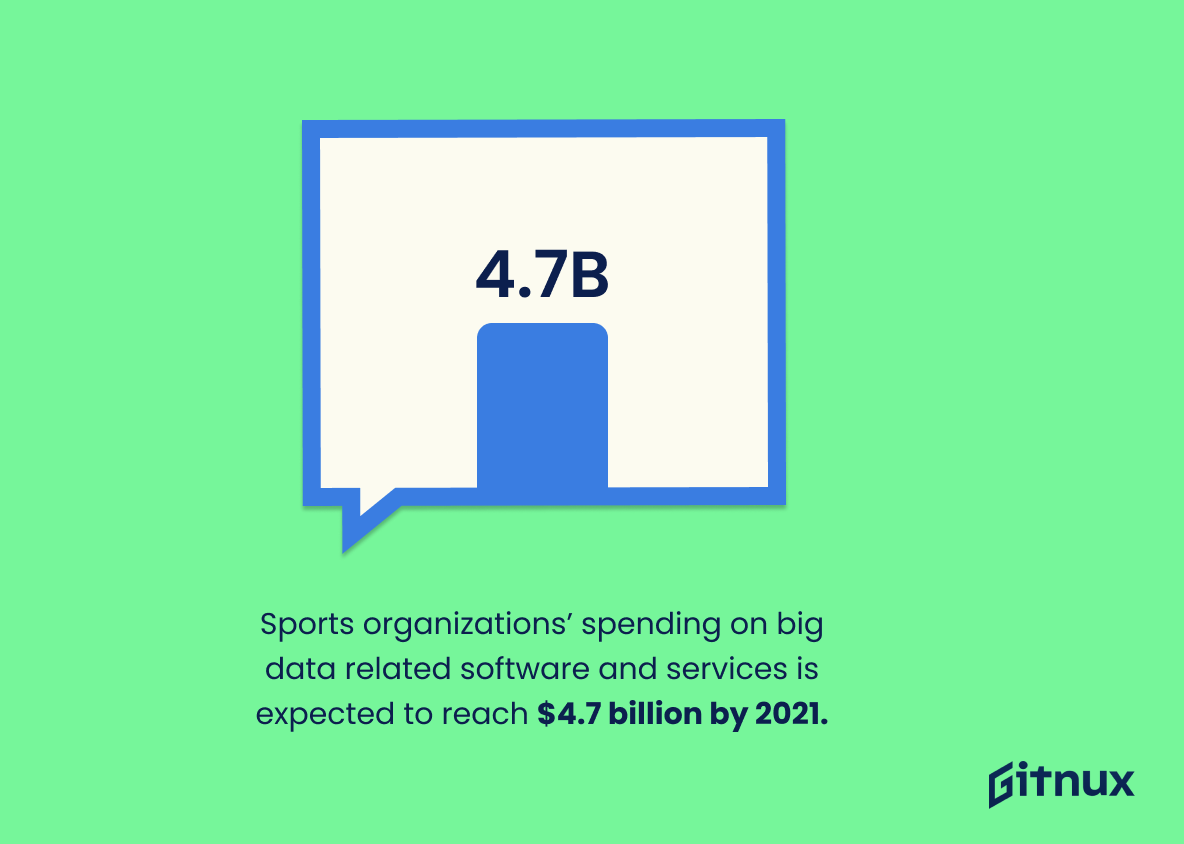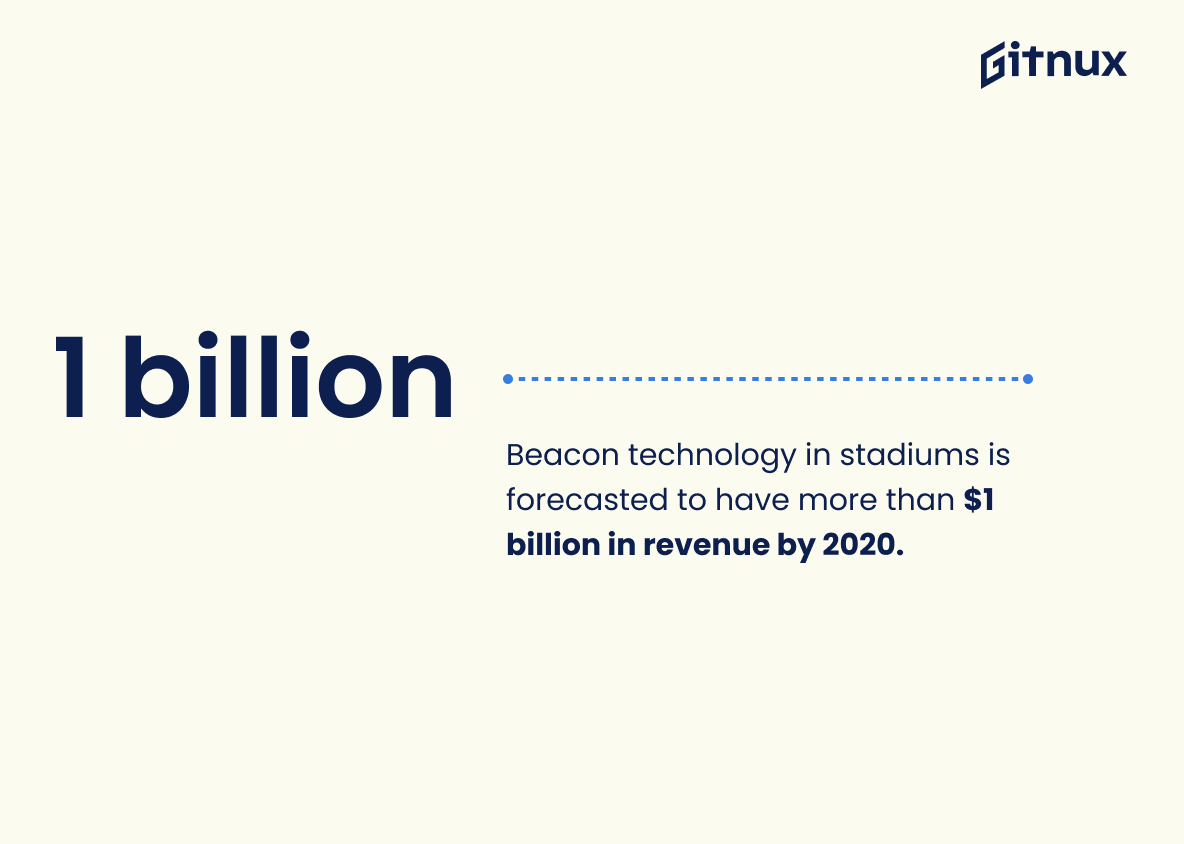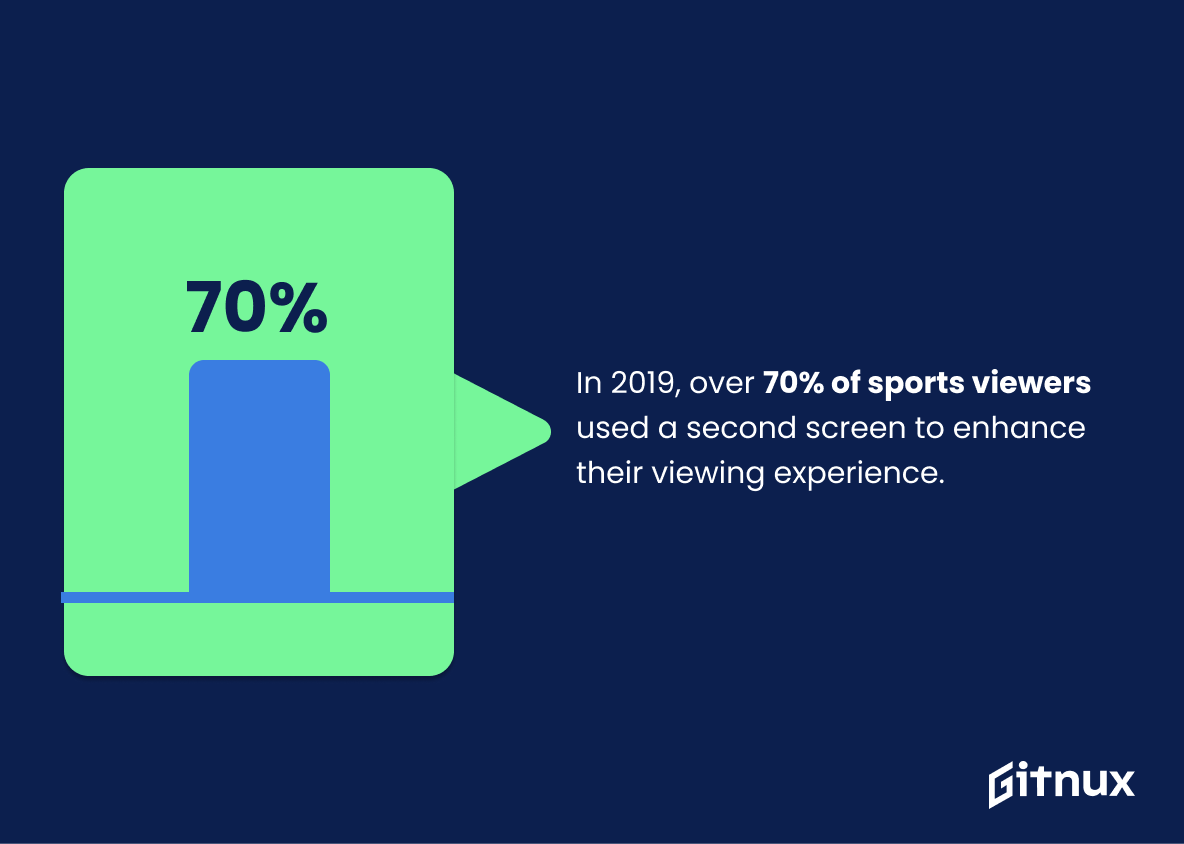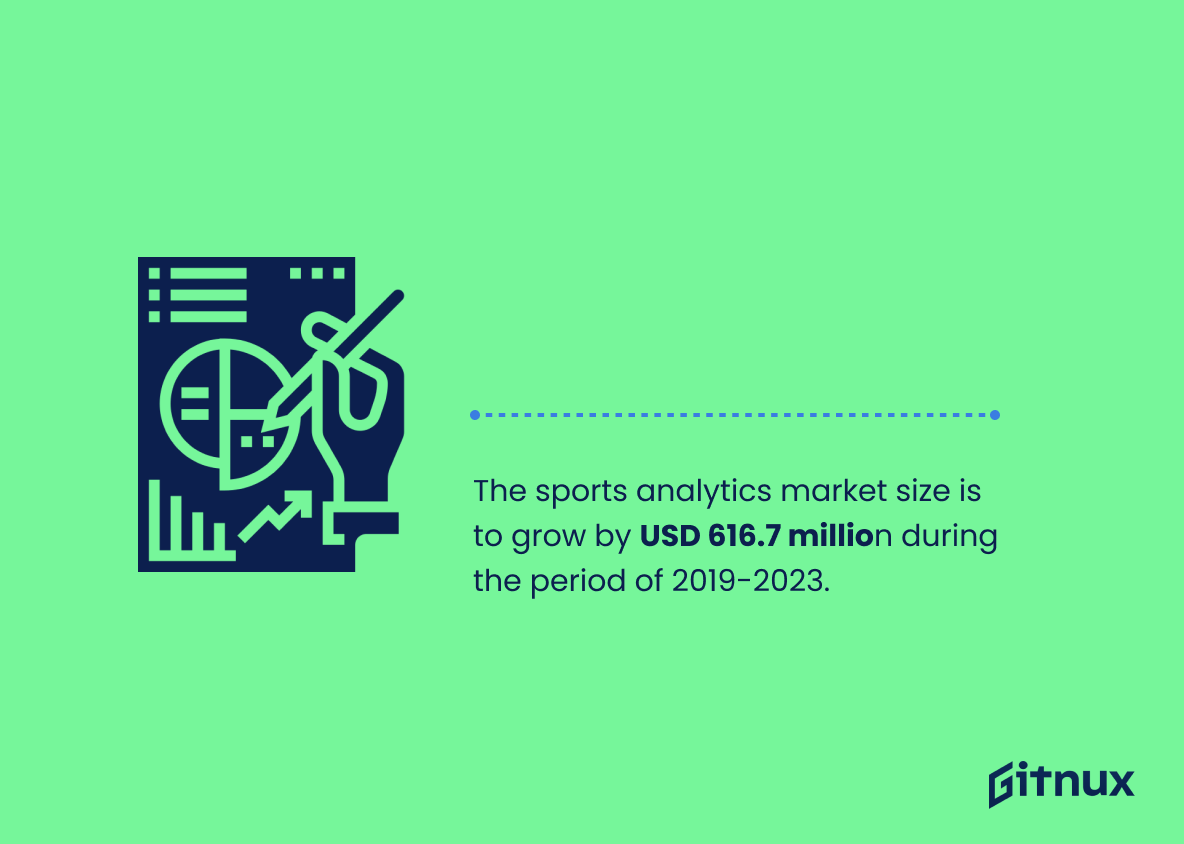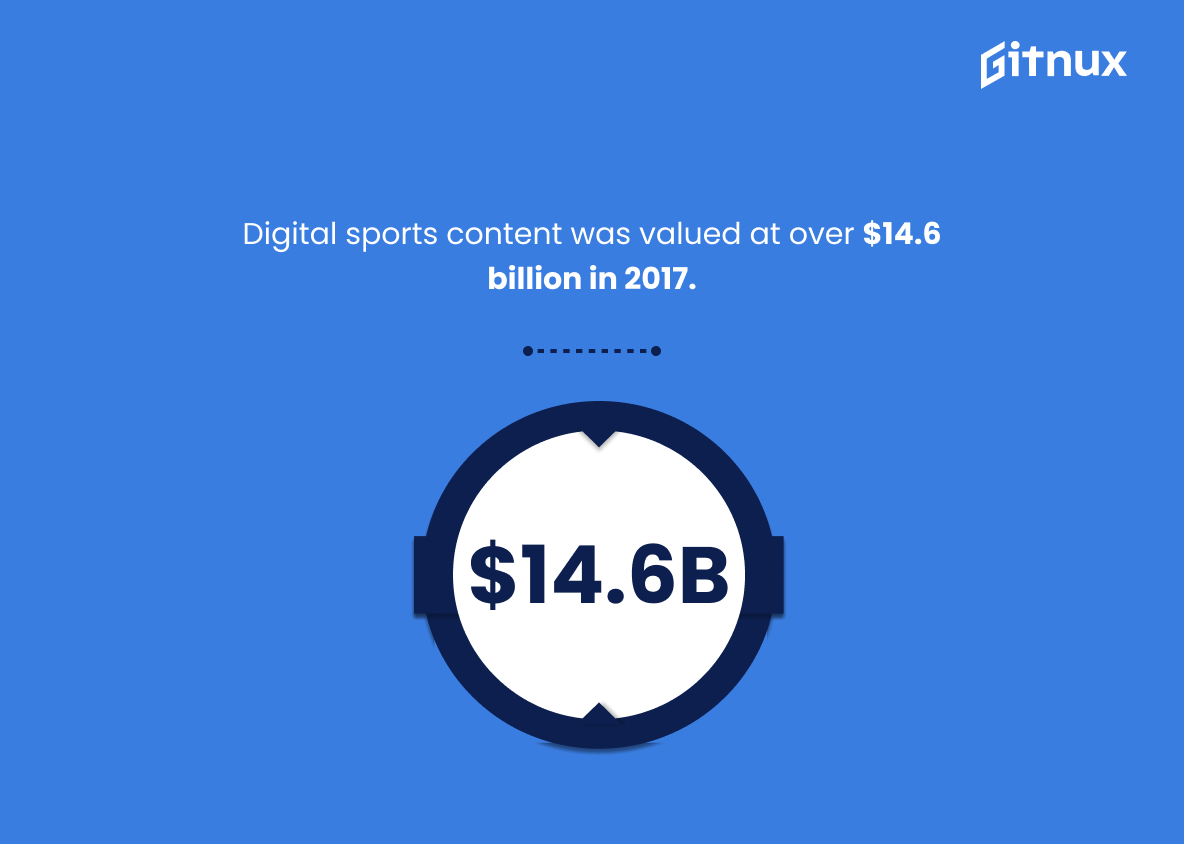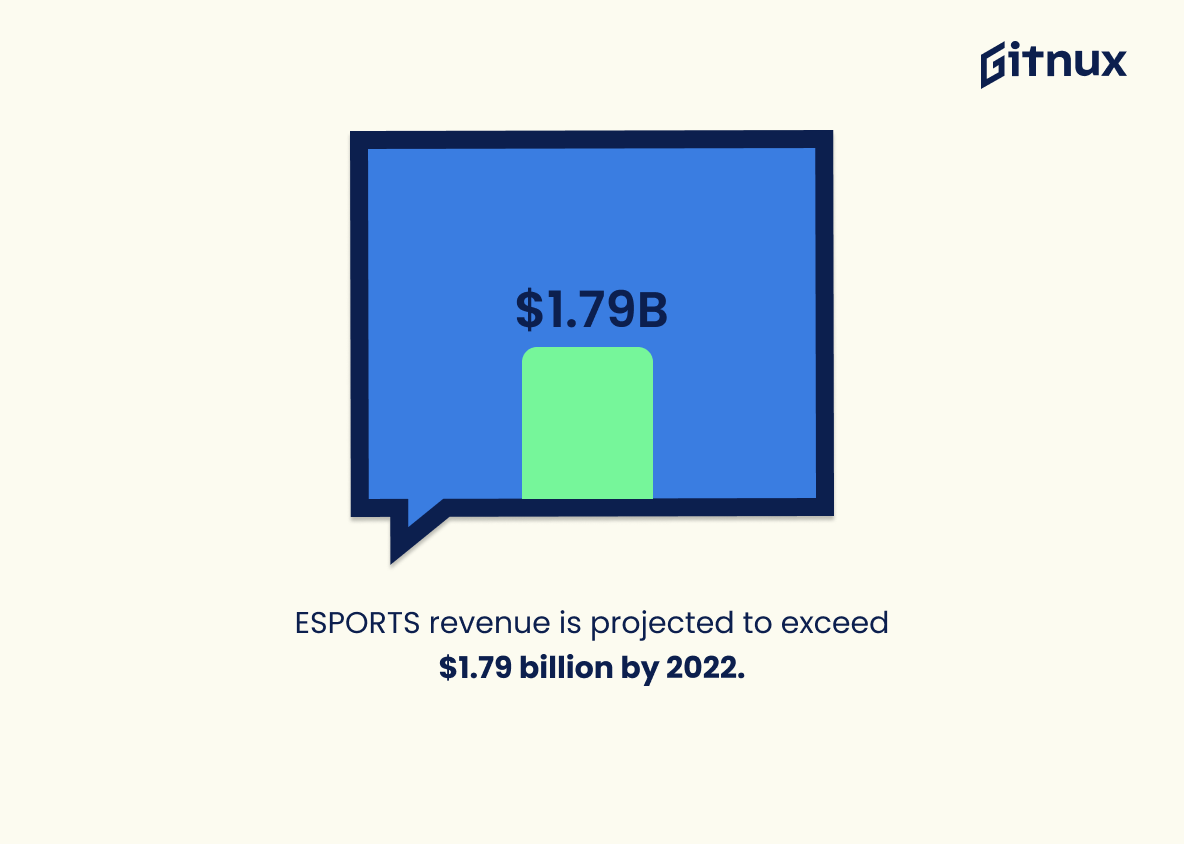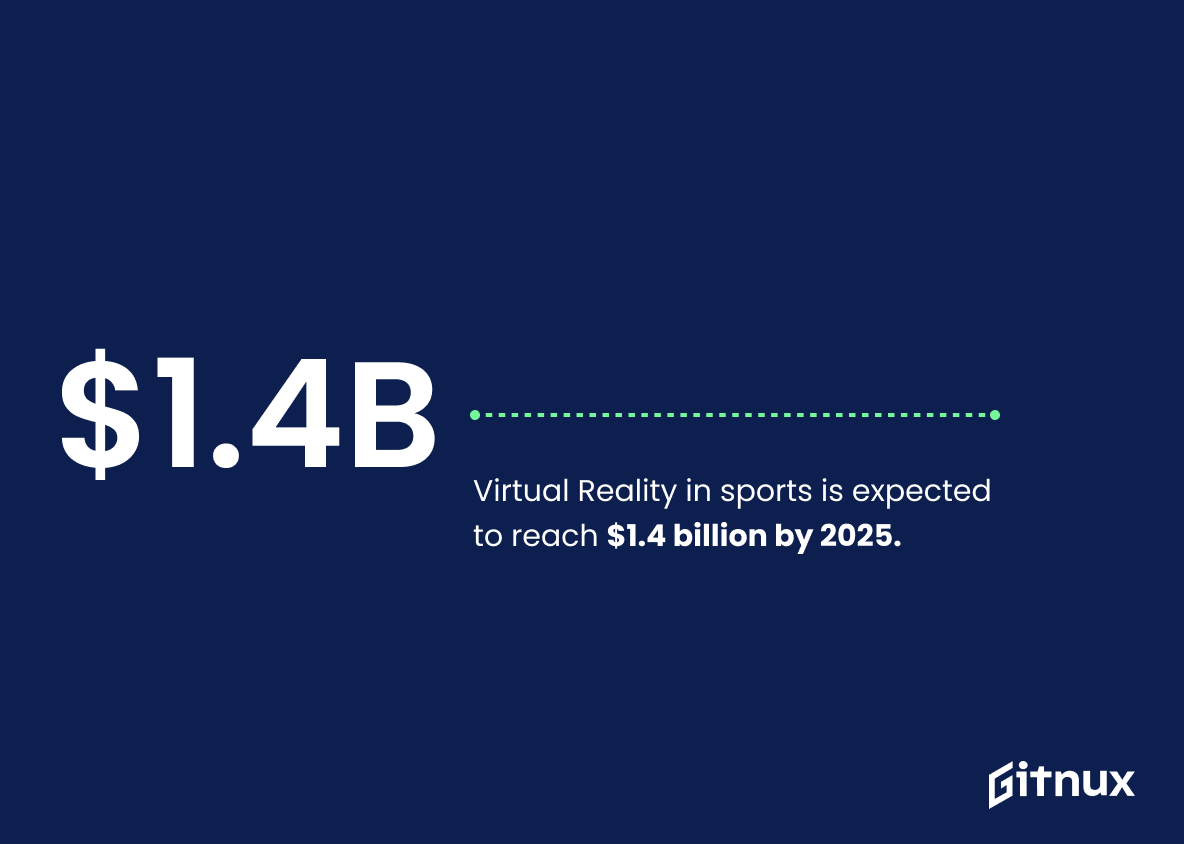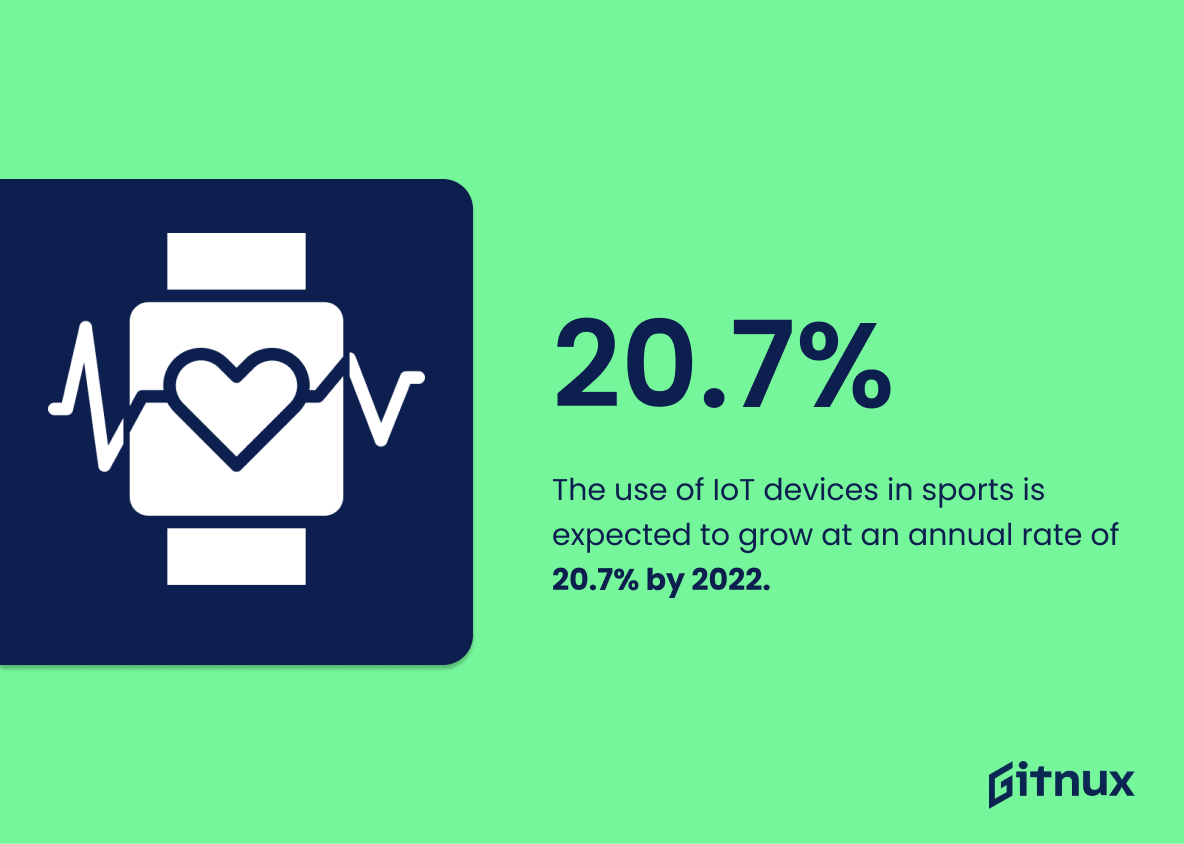As we plunge headfirst into the rapidly evolving digital age, an exciting new player enters the field: sports technology. A game-changer hybrid of dynamic athletics and ingenious innovation, the sports technology industry is continuously redefining what it means to compete and engage in sports as we know it. This blog post will delve into the labyrinth of the sports technology industry, unveiling fascinating statistics that reveal its immense growth, current trends, and its promising impact on the future of sports. Buckle up and join us as we explore the tangible figures behind this remarkable digital revolution.
The Latest Sports Technology Industry Statistics Unveiled
The global sports technology market was valued at approximately $9.80 billion in 2018.
Grasping the sheer magnitude of the sporting world’s technological sphere, one should certainly situate within their perspective the eye-opening figure of $9.80 billion – the estimated valuation of the global sports technology market in 2018. The disclosure of this colossal sum provides a robust financial benchmark, hinting not only at the enormous scale of the market, but also offering a concrete point of reference for comparing growth trends and future forecasts. This substantial figure can pave the way to deeper insights, highlighting the substantial financial impact sports technology wields, and thereby, further solidifying its unignorable importance in the blog post touching upon Sports Technology Industry Statistics.
The Asian market has the fastest growth rate of 23.1% for sports technology.
Highlighting the swift 23.1% growth rate of the Asian market for sports technology serves as a crucial pivot point in the sports technology industry discourse. It illuminates an undeniable shift of dynamism towards the East, symbolizing tremendous opportunities for businesses keen on exploring new horizons. This profound upsurge underscores Asia’s mounting influence and its potential to shape the global sports tech landscape, thus lending an additional layer of relevance to the discourse about the global sports technology industry.
In the sports technology industry, wearable devices account for the largest market share of 38.83% in 2018.
Highlighting the impressive market share of wearable devices in the sports technology arena paints a vivid picture to the readers of our niche blog post on Sports Technology Industry Statistics. The dominating 38.83% market share in 2018 emphatically underscores the meteoric rise and consumer preference for wearable devices. This pivotal data reflects their potential importance to athletes and sports enthusiasts alike, who rely on these technological marvels to keep tabs on crucial performance matrices. It also indicates that companies and entrepreneurs wishing to break into the sports tech industry and make a notable impact might do well to consider the irresistible lure of wearable devices.
Smart stadiums market, a segment of sports technology, is projected to reach $12.50 billion by 2023.
The projection of the smart stadiums market reaching a whopping $12.50 billion by 2023 serves as a compelling testament to the accelerated expansion of the sports technology industry. This potent surge reflects the dynamic integration of advanced technologies, such as IoT, AI, and Big Data analytics, into sports venues. It underlines the mass-scale evolution and digital transformation of the traditional sports landscape, becoming a linchpin for innovating fan experience, boosting operational efficiency, and increasing revenue streams. Thus, this statistic stands as a lighthouse, guiding us into the exciting future trends of the sports technology industry.
The sports analytics market size is to grow by USD 616.7 million during the period of 2019-2023.
The substantial growth predicted in the sports analytics market, escalating by a massive USD 616.7 million from 2019 to 2023, acts as a shining beacon highlighting the technological evolution wave sweeping across the sports industry. This comes as a thrilling testament to the technological advancements and also underscores the increasing embracement of these innovations by the sports industry. By these robust numbers, it is evident that more organizations within this industry are recognizing the value of data-driven insights to enhance team performance and inspire winning strategies. This continuous upward journey of the sports analytics market prominently features in the narrative of the Sports Technology Industry, illustrating the escalating relevance of analytics as a game-changing tool in the sports arena.
North America dominated the sports technology market with 35.4% share in 2020.
Highlighting North America’s commanding 35.4% share of the sports technology market in 2020 unveils the continent’s significant role in driving this industry forward. As the reigning champion, North America’s strong foothold in the marketplace underscores the region’s attraction and commitment to digital innovation, consumer technology adoption, and high-end sports management. This fact, therefore, sets the precedent for emerging markets to follow, while providing valuable insight for strategists and investors in the sport technology terrain. Thus, it is an instrumental guidepost in navigating through the dynamics of sports technology industry statistics.
The software product holds the largest market share taking up over 44% in the sports technology sector.
A telling illustration of the ever-evolving landscape of the sports technology industry, the statistic indicating a single software product commanding over 44% of the market share, serves as a testament to its dominance and broad acceptance. In a sector bursting with competition, innovative offerings, and ceaseless advancements, capturing such a hefty proportion reflects an intriguing combination of superior product quality, effective marketing strategies, strong customer trust, and perhaps unparalleled functionality. When you are navigating through the data-laden world of Sports Tech Industry Statistics, this piece of data not only informs about market leadership but also invites speculation and investigation into what secret sauces might have propelled this software product to its enviable position. Whichever way the industry winds blow, one thing is certain – participants in the sports technology sector, be they investors, competitors, or potential entrants, will be keeping a close watch on this dominator.
The sports technology industry’s largest application area is movies and video games, with a market share of 30%.
Waving the flag as the king of the castle, the application of sports technology in movies and video games dons the crown with a commanding 30% share of the market. This substantial slice of the pie offers critical insight for a blog post diving into the depths of Sports Technology Industry Statistics. Painting a palpable picture of the industry landscape, this data point identifies the lead horse in the race of applications. It underlines the profound interconnection between sports tech, the entertainment industry, and the digital world – a triad that is increasingly crucial in the 21st century. It also paves the way towards future conversations on the synergies, growth potential, and evolving challenges within this sector. By identifying this dominating domain, readers can better grasp the commercial opportunities, innovation-led trends, and competitive dynamics that are currently shaping this riveting industry.
Sports organizations’ spending on big data related software and services is expected to reach $4.7 billion by 2021.
Grasping the magnitude of the figure, $4.7 billion, earmarked for investment in big data related software and services by sports organizations by 2021, illuminates the massive wave of digital transformation sweeping across the sports technology industry. This seismic financial commitment signifies the weighty role that data-driven insights play in reshaping sports strategies and making accurate predictions that fuel high-stake decisions in competitive games.
This statistic is a vivid testimony to the burgeoning reliance of sports organizations on sophisticated technology, setting the stage for a future where sports analytics becomes an indispensable tool rather than a luxury. Consequently, it heralds the rapid evolution of the sports industry, where technology vendors stand to gain immensely due to the growing demand for their products and services.
In essence, this sum gives readers a clear lens to perceive the scale of technology’s grip on the sports industry, an investment that’s anticipated to boost performance and reshape the future of games. It’s a beacon towards a future where tech-driven sports management empowers teams to unlock their full potential and redefine their game strategies.
Beacon technology in stadiums is forecasted to have more than $1 billion in revenue by 2020.
As we venture deeper into the realm of the Sports Technology Industry, this forecasted $1 billion revenue from Beacon technology in stadiums presents an undeniable testament of advancing digital frontiers by 2020. Not only does it signify the sizable investment in tech-enhanced sporting experiences, but it also intimates the potential monetary benefits that can be tapped into. Furthermore, it is reflective of the growing reliance and acceptance of technology in enriching sports for fans, athletes and stakeholders alike. In essence, it underlines the vital role of precision and engagement driven innovations like Beacon technology, providing a rich seam of opportunity and growth in the sports tech industry.
In 2019, over 70% of sports viewers used a second screen to enhance their viewing experience.
The infusion of this statistic in the discourse of the Sports Technology Industry lays bare one crucial trend; there exists a rising tide of sports viewers who have integrated a dual-screen approach towards enhancing their watching experiences in 2019. Spanning over 70%, this figure underscores the evolving behaviors and preferences of sports audience, reflecting the profound influence of technology toward shaping the future of sports viewership. Candidly, it points towards the indispensable role of technology in creating a multi-faceted view of the game, which further encourages tech companies to develop innovative solutions. Moreover, this hints at the potential growth and lucrative opportunities in the industry, specifically in developing applications or platforms for the second screen usage that could transform the way sports fans engage with their favorite events.
Digital sports content was valued at over $14.6 billion in 2017.
A blog post discussing Sports Technology Industry Statistics would certainly be incomplete without mentioning the staggering value of digital sports content, a hefty $14.6 billion in 2017 alone. This juicy tidbit serves as a pulse check on the current health of the industry, indicating its impressive economic power and establishing it as a significant player on the digital field. This sizable monetary value echoes the successful melding of sports, technology, and digital media, painting a vibrant picture of an industry that adeptly leverages advanced tech for gaining ground in the world of digital content. Hence, this figure not only underscores the financial potential of the industry, but also gives a nod to its innovative strides and the promising cross-industry opportunities it cracks open.
The use of IoT devices in sports is expected to grow at an annual rate of 20.7% by 2022.
The trajectory of IoT devices’ use in sports, predicted to explode with an impressive annual growth rate of 20.7% by 2022, paints a captivating panorama. Open your eyes to a future where sports technology ceases to be an adjunct and morphs into an indispensable player on the field. This projected growth prompts us to dive into a sports world increasingly augmented by innovation, elevating athlete performance, enhancing the spectator experience, and revolutionizing training methodologies. It’s more than a number; it’s an indicator of changing tides, bearing direct implications for stakeholders within the sports technology industry. This forecasted growth punctuates the narrative of our blog post, outlining the burgeoning relevance of tech-interventions in sports and highlighting emerging opportunities that make the Sports Technology Industry an exciting prospect for exploration and investment.
ESPORTS revenue is projected to exceed $1.79 billion by 2022.
Illustrating the rapidly evolving landscape of the sports technology industry, one can gaze at the dazzling beacon of the eSports sector. Its projected revenue of over $1.79 billion by 2022 underscores not only the phenomenal growth and economic potential of eSports, but also points towards an increasingly significant shift in preference and consumption of sports. It serves as an affirmation for businesses and investors to acknowledge and explore vast opportunities tucked within this digital realm. The fusion of technology and sports in the form of eSports has indeed launched us into an unprecedented era of engagement, entertainment and economy that is changing the very definition of sports itself.
Virtual Reality in sports is expected to reach $1.4 billion by 2025.
Forecasting a surge in the Virtual Reality (VR) sector in sports to a whopping $1.4 billion by 2025, undeniably illustrates the transformative power of technology within the sports industry. It plants a flag of anticipation and determination, suggesting an unstoppable revolution that will leave no goal unmet, no boundary uncrossed. In essence, it embeds the impression of an ever-accelerating momentum where technology and sports seamlessly merge. This figure presents a compelling vision of the not-so-distant future, where sports aficionados can savour immersive experiences from the comfort of their living room, and coaches and athletes can leverage VR for enhanced game planning and performance review. Flooded with countless opportunities, investing in sports technology isn’t merely a whimsical trend; rather, it’s forging a trail towards an innovative, profitable, and exciting sports landscape.
The sports software market has been growing by 7.4% YoY and reached $4.4 billion in 2020.
Highlighting the impressive 7.4% YoY growth and culminating achievement of $4.4 billion in 2020 of the sports software market propels the perspective of the Sports Technology Industry’s potential. This stratospheric rise in figures clearly depicts not just the financial prowess of the sector, but also underscores the heightened interest and adoption of technology in sports. From fitness tracking and game analytics, to fan engagement and stadium management, advanced software is revolutionizing the athletic sphere, bringing more efficiency and precision. Therefore, for stakeholders, investors and enthusiasts, such positive growth trajectory is a clear indication of the immense opportunities that dwell within the thriving arena of Sports Technology.
Athlete performance tracking technology is estimated to grow at a CAGR of 27.3% over the forecast period.
Emphasizing the potential growth of athlete performance tracking technology, captured in the significant estimated CAGR of 27.3% over the forecast period, adds a dynamic dimension to the narrative around the future of the sports technology industry. It projects not only the relevance but the impending expansion of this sector within the overall industry. This metric acts as a beacon, spotlighting the rapid innovation and adoption that’s taking place in how we monitor and enhance athlete performance. Consequently, it underscores the potential opportunities and challenges that this anticipated growth could unleash, thus providing the readers with a more penetrative insight on the subject matter and potentially guiding investment and development strategies within the industry.
Mobile ticketing in sports will surpass $14 billion in 2019.
In the realm of Sports Technology Industry Statistics, the prediction that mobile ticketing in sports will exceed $14 billion in 2019 carries substantial weight. The digital revolution is nowhere more visible and impactful than in the realm of sports. Fans and spectators are swapping printed tickets for the convenience and security of mobile ticketing, accelerating the traction of this digital transaction towards a $14 billion forecast. This transition isn’t merely a technological change, but a watershed moment, signaling a significant shift in consumer behavior and preferences. Furthermore, with such a colossal financial manifestation, this statistic bolsters the evolving realm of sports technology, reflecting the promising monetization opportunities and remarkable growth potential for businesses operating in this industry, ultimately shaping the future trajectory of the sports technology landscape.
On-demand streaming services may increase to 92 million sports viewers by 2022.
In the vibrant panorama of the sports technology industry, this prediction of a surge to 92 million sports viewers on on-demand streaming services by 2022 is a striking beacon. It telegraphs the accelerating shift in how audiences are consuming sports, underscoring the era-defining trend from traditional to digital broadcasting. This number fundamentally defines the expanding opportunities for emerging platforms to capitalize, as viewership is a crucial factor in their revenue model. Furthermore, it signals a call for sports clubs, federations, and media to prioritize digital strategies, ensuring they are not left behind in the streaming revolution. What we see here, vibrant and clear, is an unambiguous testament to the robust dynamics of consumer adaptation within the sports technology industry.
Conclusion
The relentless pace of innovation in sports technology is reshaping how we engage with, participate in, and manage sports. From tools that influence athletes training and performance to apps that change how fans interact with sports, technology has undeniably revolutionized the way we experience sports. The continued growth and manufacturing advancements, as denoted by industry statistics, are optimistic signs. The sports technology industry will undoubtedly continue to evolve, bringing thrilling possibilities for athletes, sports management, and fans globally. It provides a clear portrait of an industry moving towards more advanced, personalized, data-driven, safer, and inclusive sports ecosystem. As we continue to explore this intersection of sports and technology, the stats provided here will ideally offer a benchmark for future comparisons, foster new tech developments, keep the conversation going and remind us of the transformative power of technology in sports.
References
0. – https://www.www.fnfresearch.com
1. – https://www.www.businesswire.com
2. – https://www.www.juniperresearch.com
3. – https://www.www.zionmarketresearch.com
4. – https://www.www.marketsandmarkets.com
5. – https://www.www.financesonline.com
6. – https://www.www.resumenews.com
7. – https://www.www.statista.com
8. – https://www.www.verifiedmarketresearch.com
9. – https://www.www.researchdive.com
10. – https://www.www.globenewswire.com
11. – https://www.www.prnewswire.com
12. – https://www.www.syncsort.com
13. – https://www.www.pwc.com
14. – https://www.www.alliedmarketresearch.com
15. – https://www.www.mobilemarketer.com
